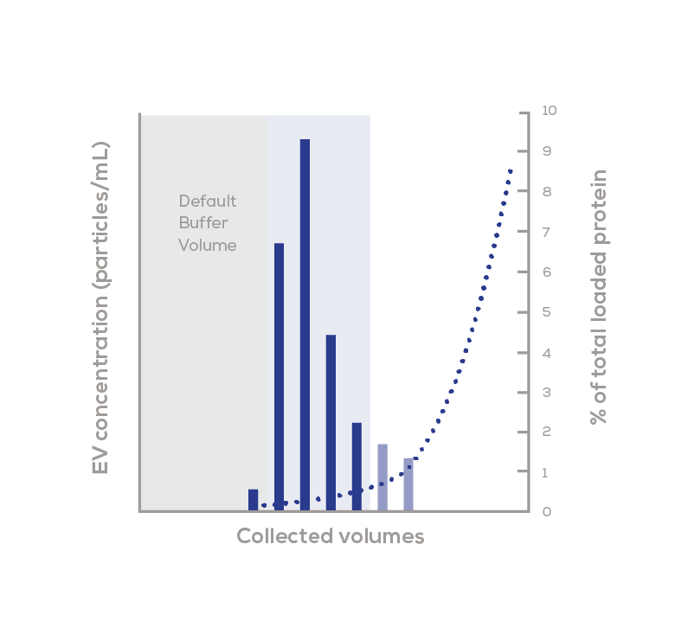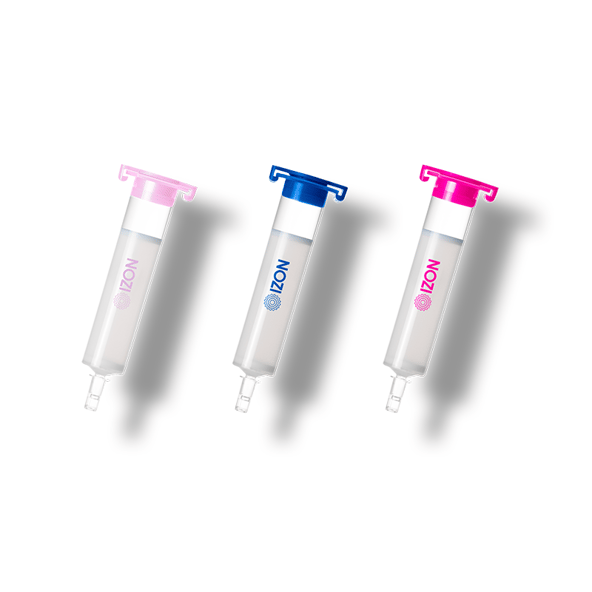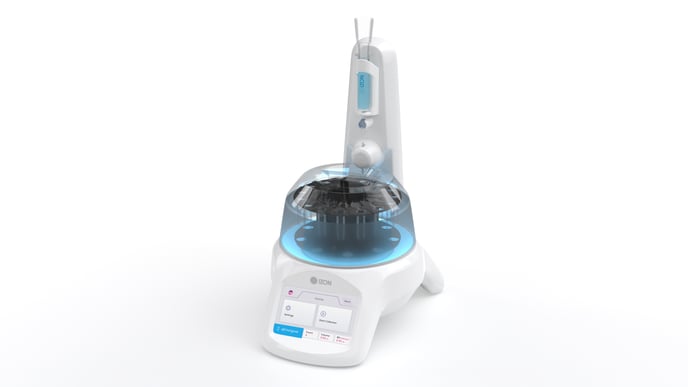How do qEV columns work?
Izon's qEV columns harness size exclusion chromatography to separate particles based on their size as they pass through a column packed with a porous polysaccharide resin.
Izon's qEV columns utilise size-exclusion chromatography (SEC) – a method of separating particles in a sample based on their size. Under the force of gravity, the sample of interest travels through and around the column's porous, polysaccharide resin beads. As the sample passes through the column, smaller particles become trapped in the resin pores and their exit from the column is delayed. Larger particles on the other hand, are unable to enter the resin pores and are therefore able to pass through the column more quickly. After the buffer volume passes through the column, the sample is eluted in sequential volumes; early volumes contain larger particles, while later volumes contain the smallest, typically protein contaminants (Figure 1).

Figure 1: Representative elution profile of a human plasma sample separated using a qEV column and Automatic Fraction Collector (AFC). Particle concentration (blue bars) is measured using tunable resistive pulse sensing via the Exoid, and protein (blue dotted line) is measured via bicinchoninic acid assay. Blue shaded area: Purified Collection Volume.
Three qEV column series are available – the 70 nm, 35 nm, and 20 nm series, all available in a wide range of sizes. The 20 nm series is the latest addition, allowing for recovery of particles down to the 20 nm range.

Figure 2: The qEVoriginal 20 nm, 35 nm and 70 nm series.
Izon's Automatic Fraction Collector (AFC) is an instrument that automates this EV isolation process, allowing for precise and reproducible separation.

Figure 3: The Automatic Fraction Collector (AFC).
Watch this video on how qEV columns isolate EVs:
Benefits of using qEV columns include:
- Fast isolation of EVs
- The gentle approach of SEC enables the integrity of EVs to be retained
- Scalability: pair with the Automatic Fraction Collector to improve throughput and reproducibility
- High purity: Gen 2 qEV columns (35 and 70 nm series) remove ~99% of contaminating background proteins
For more information on qEV columns, and which qEV column series would best suit your research interest, visit the qEV overview page.